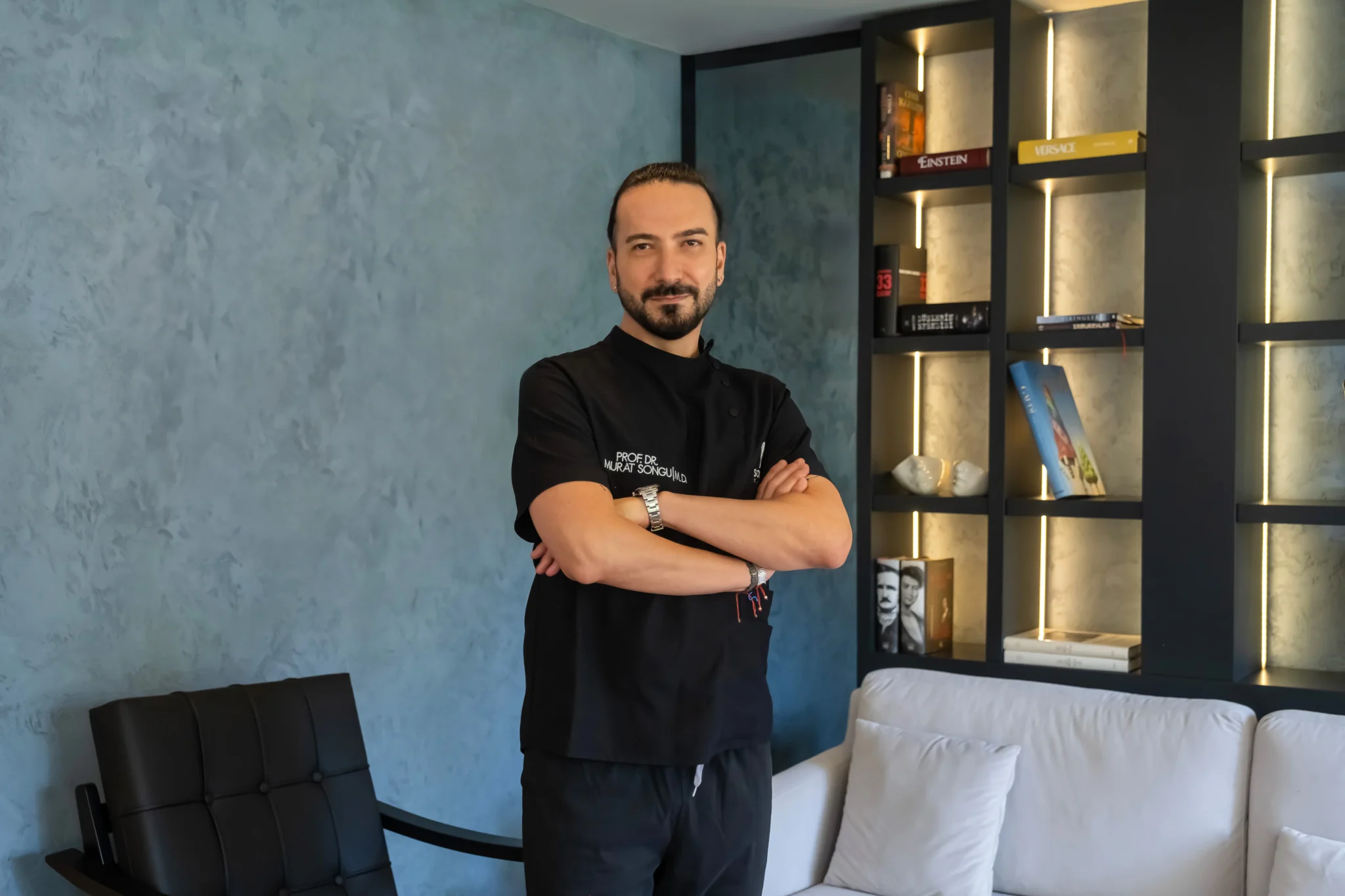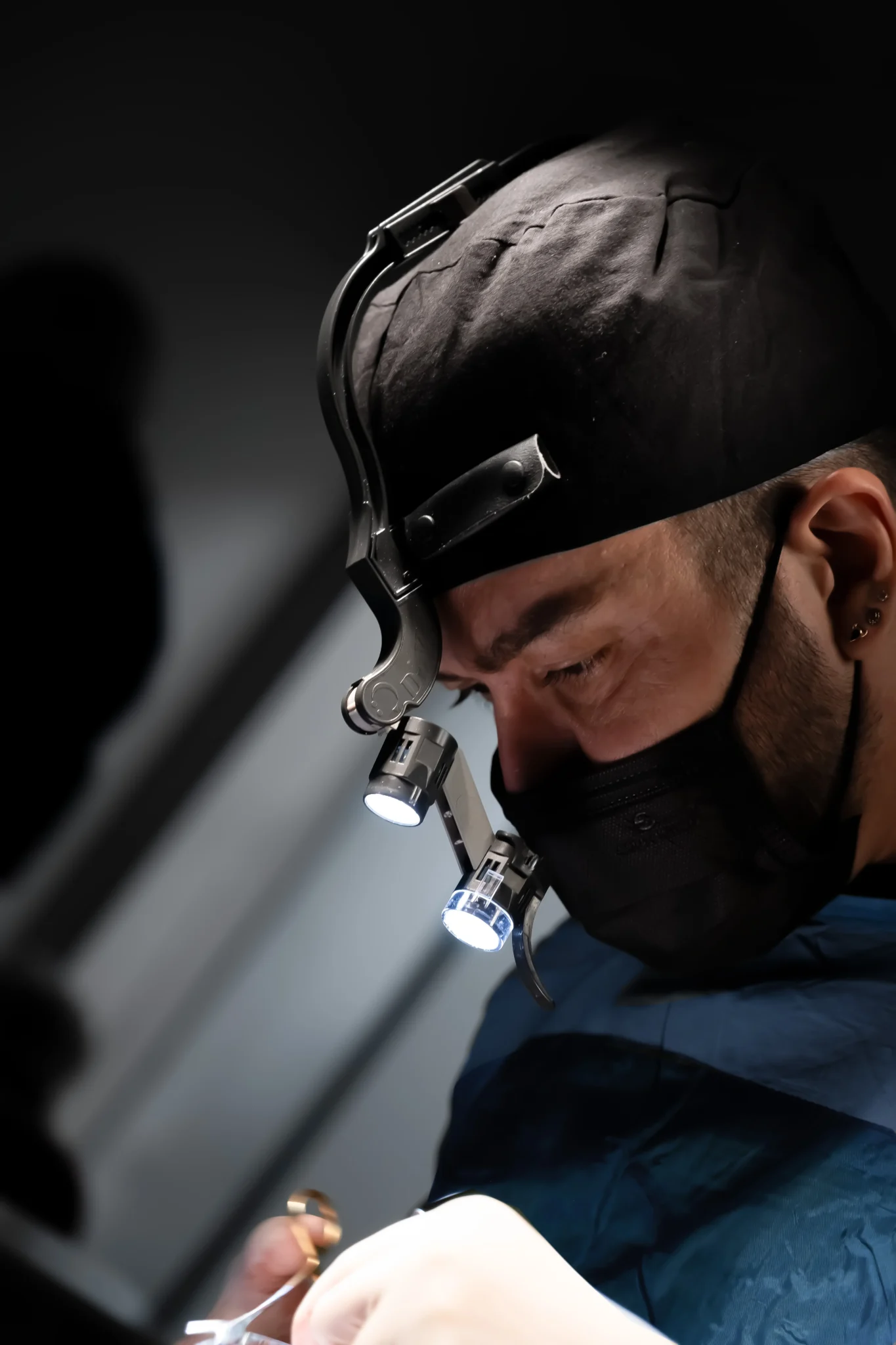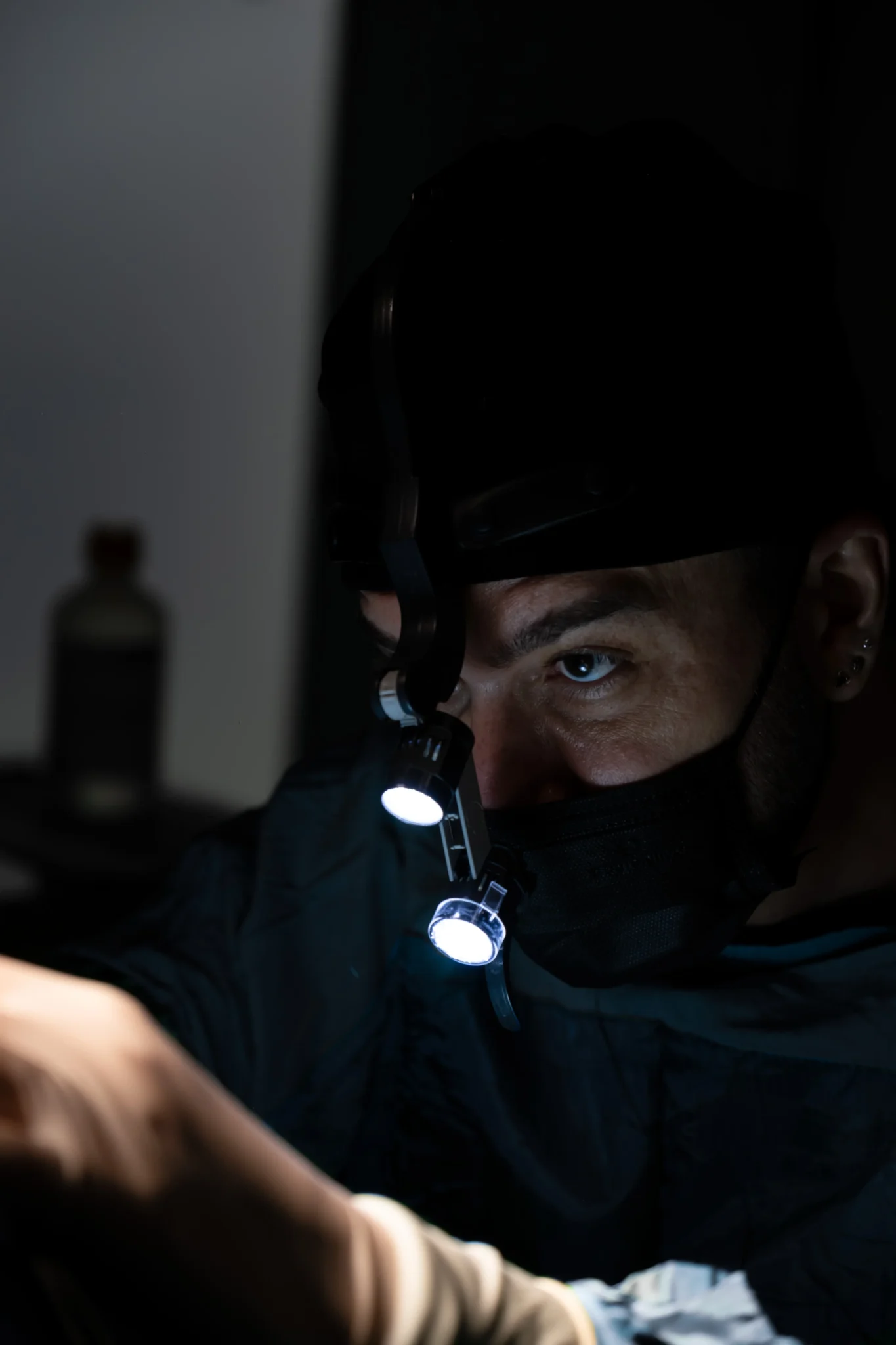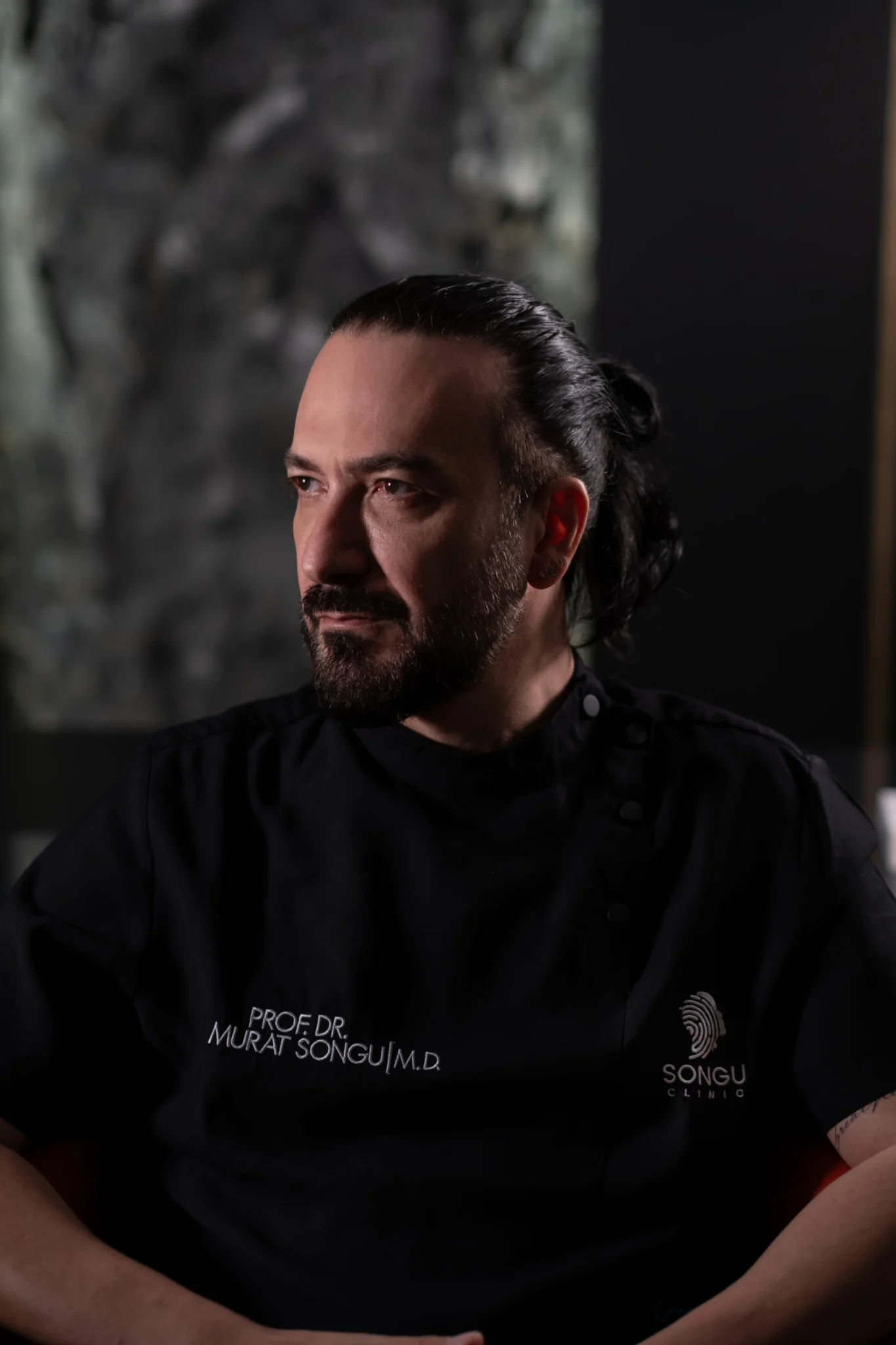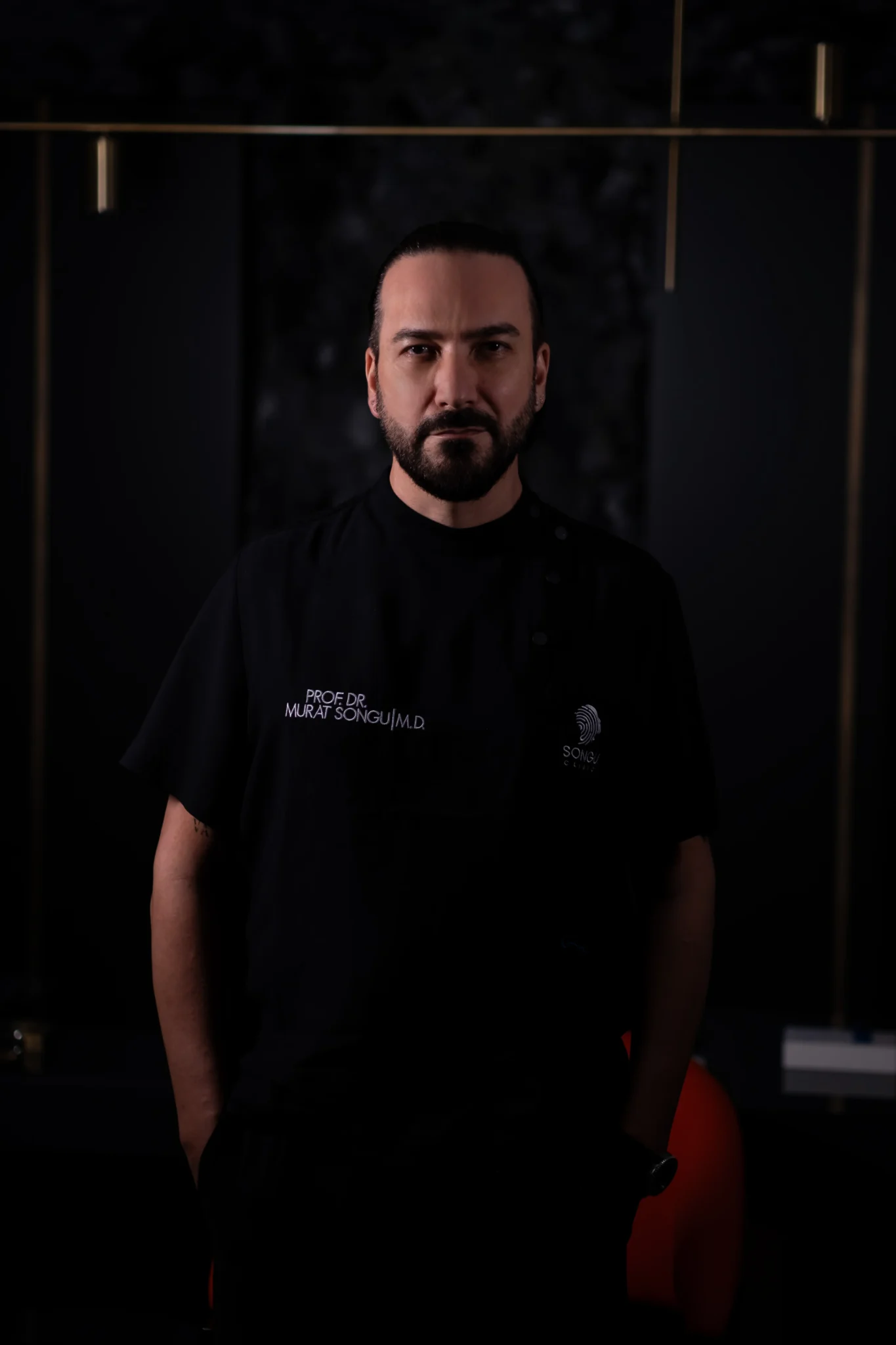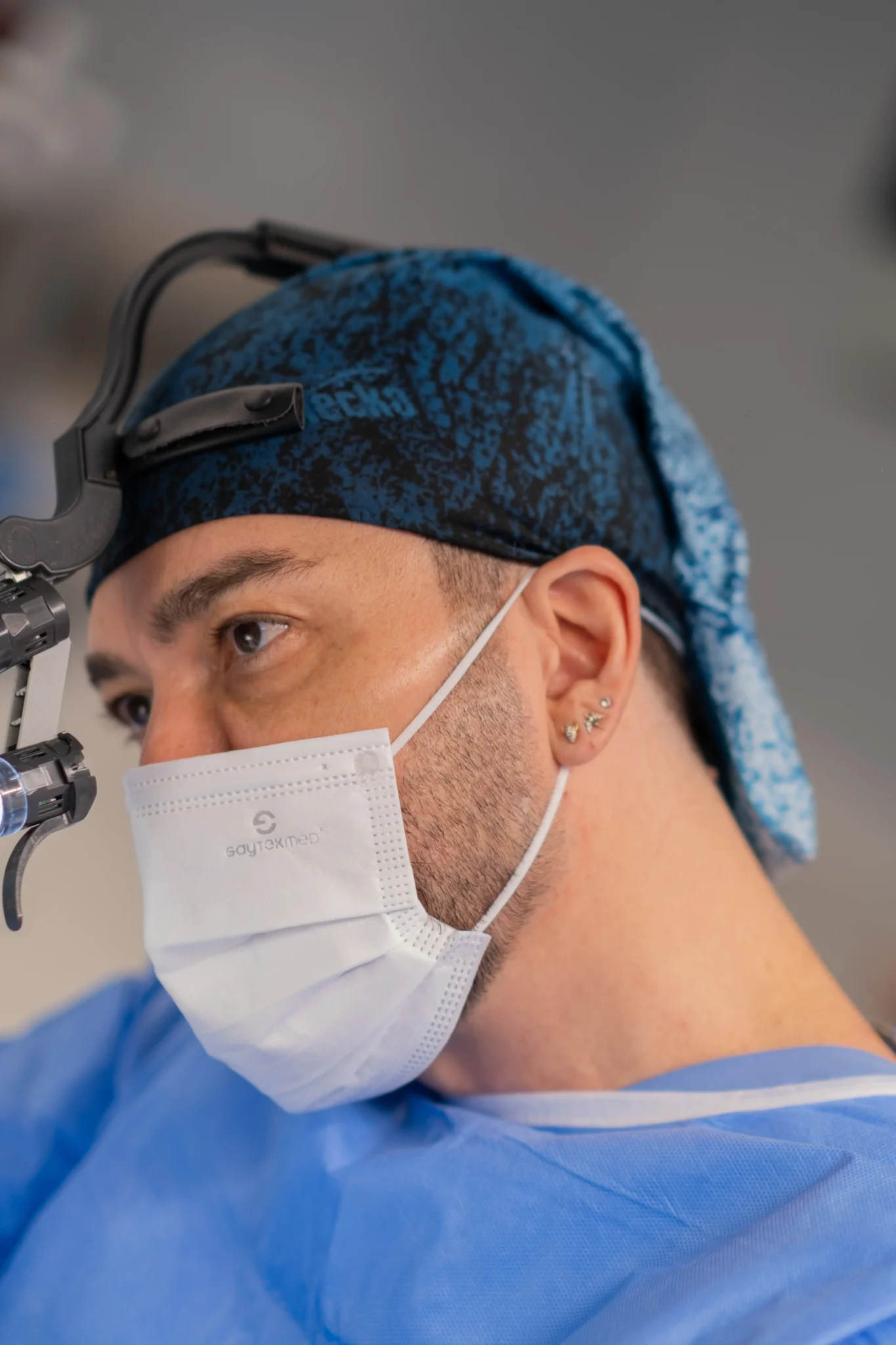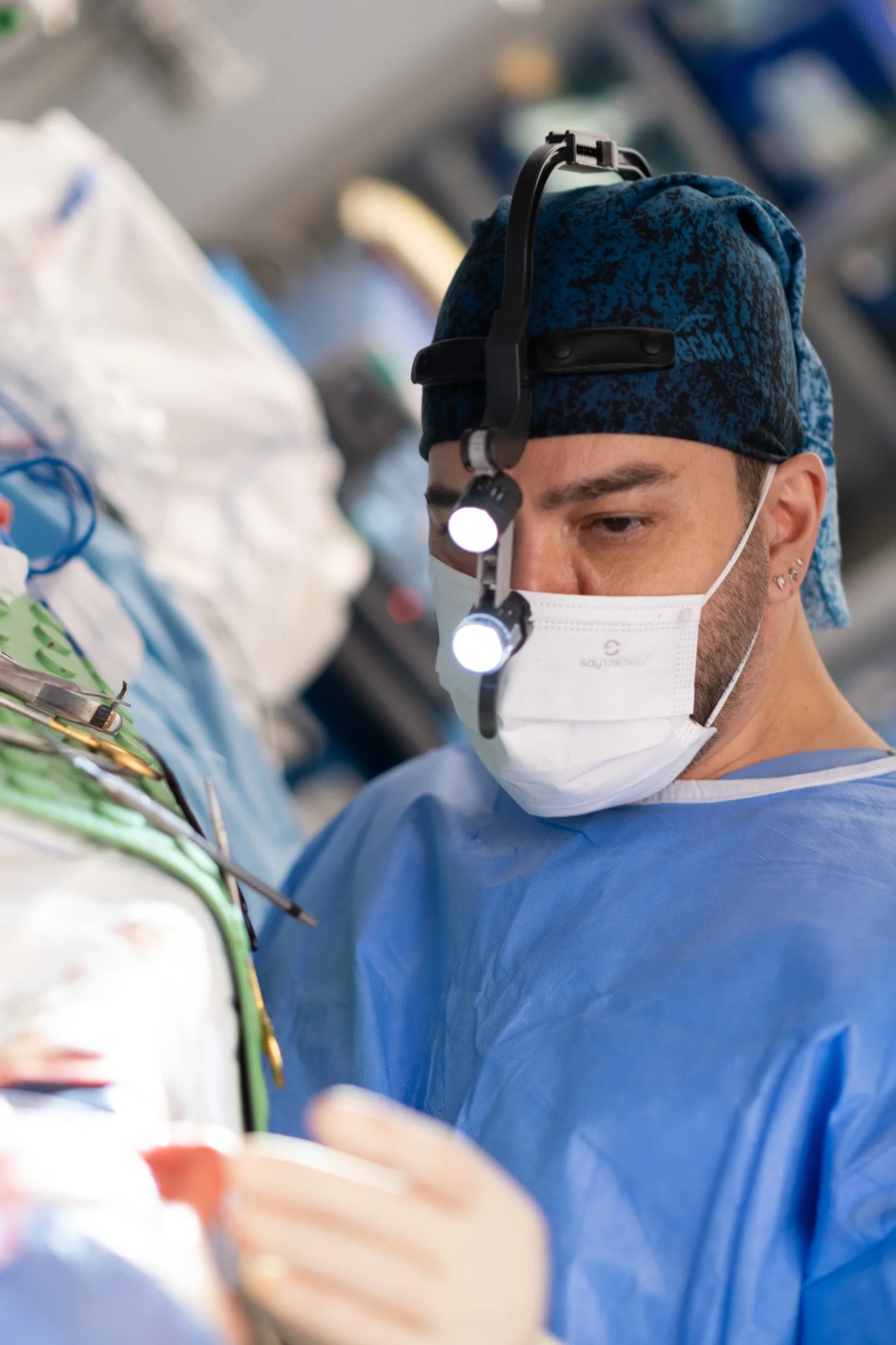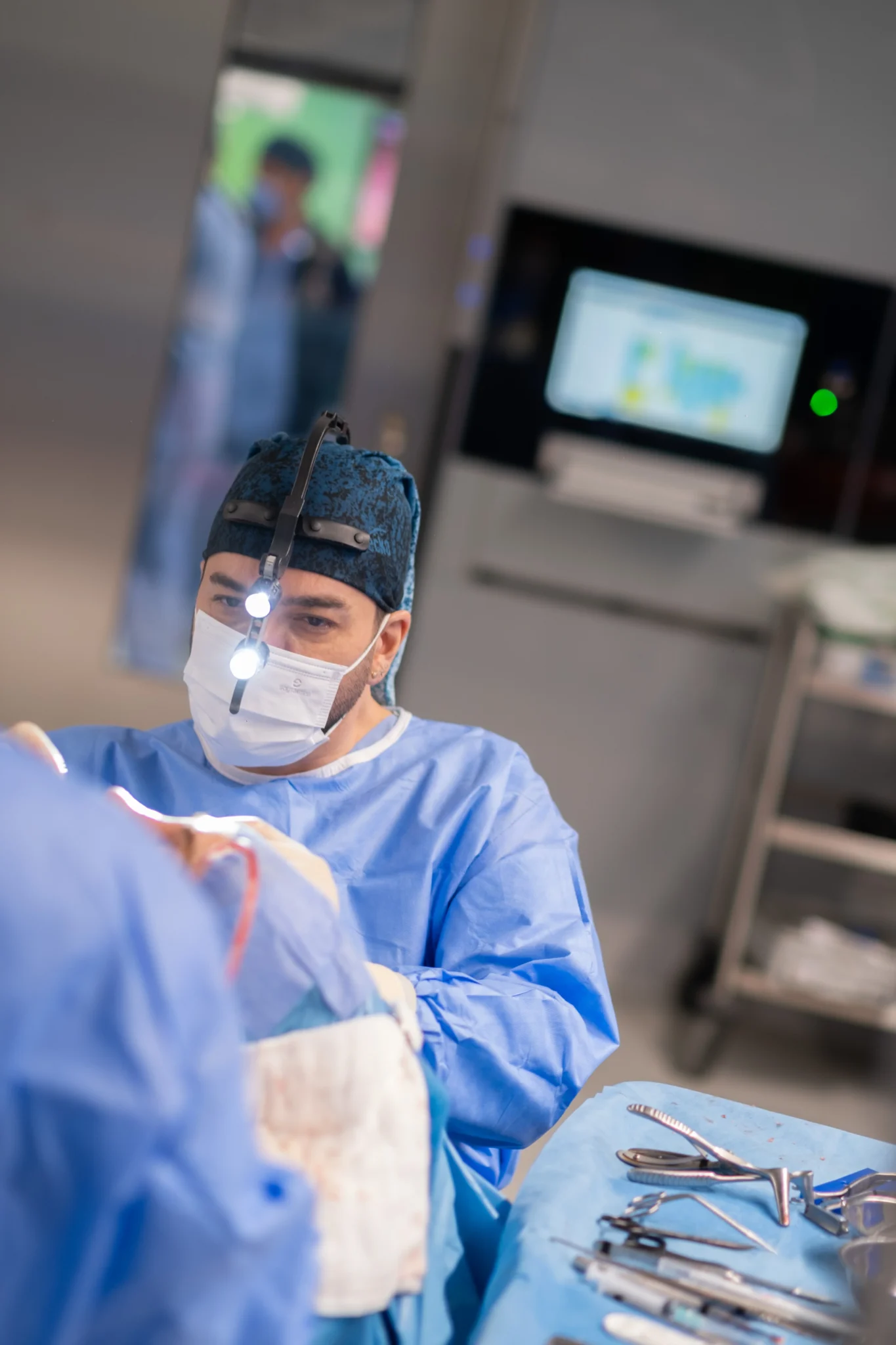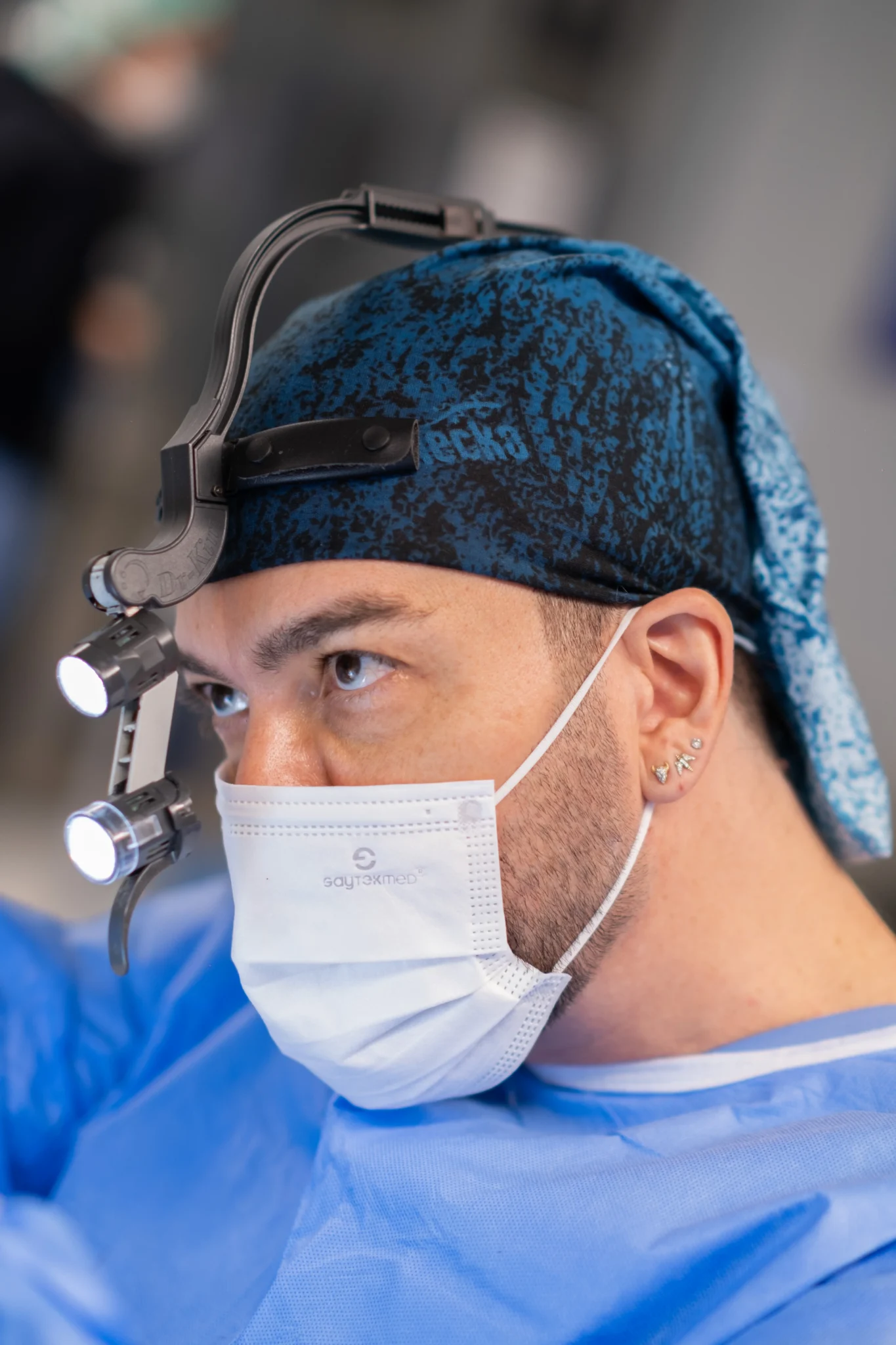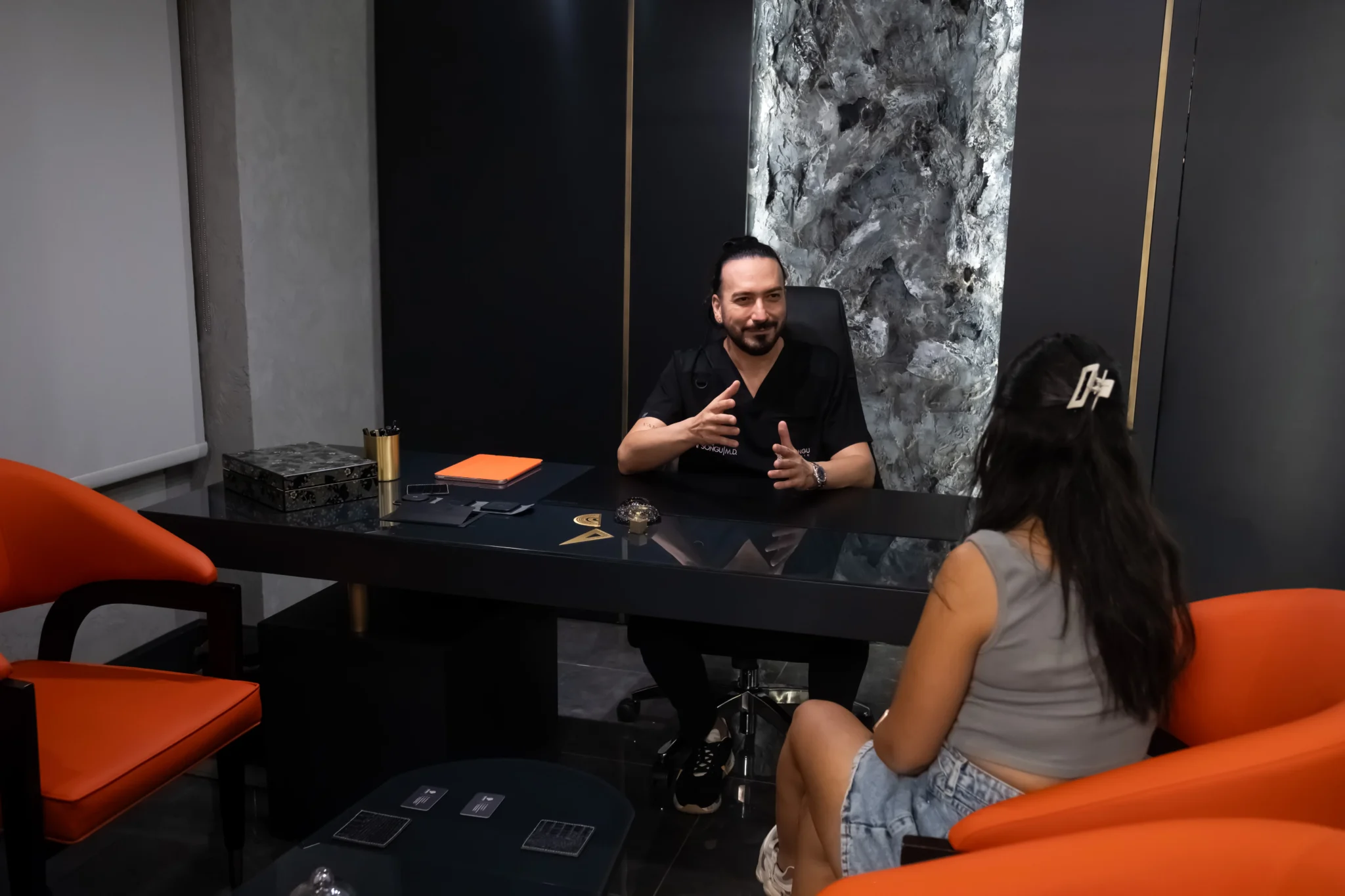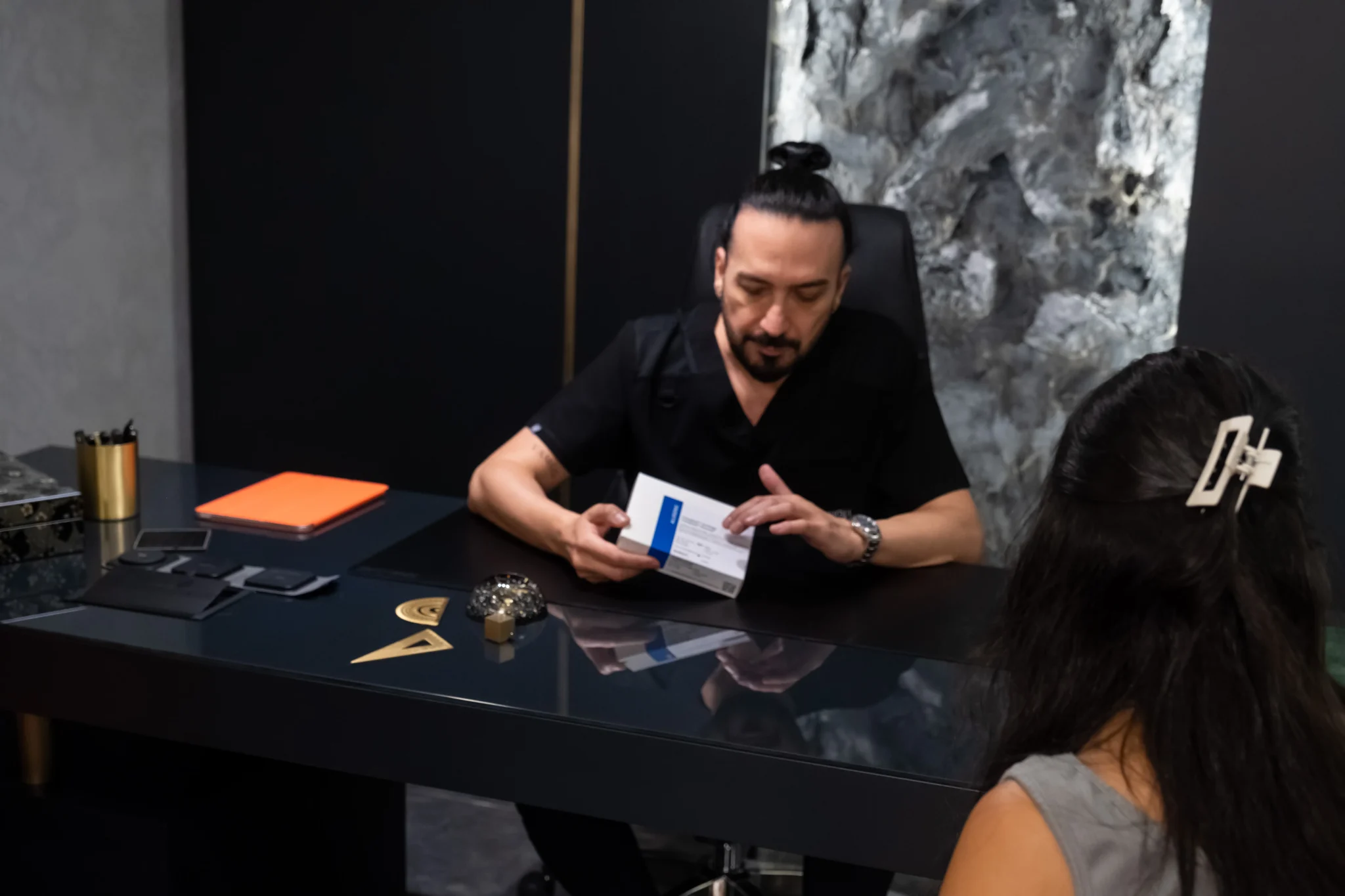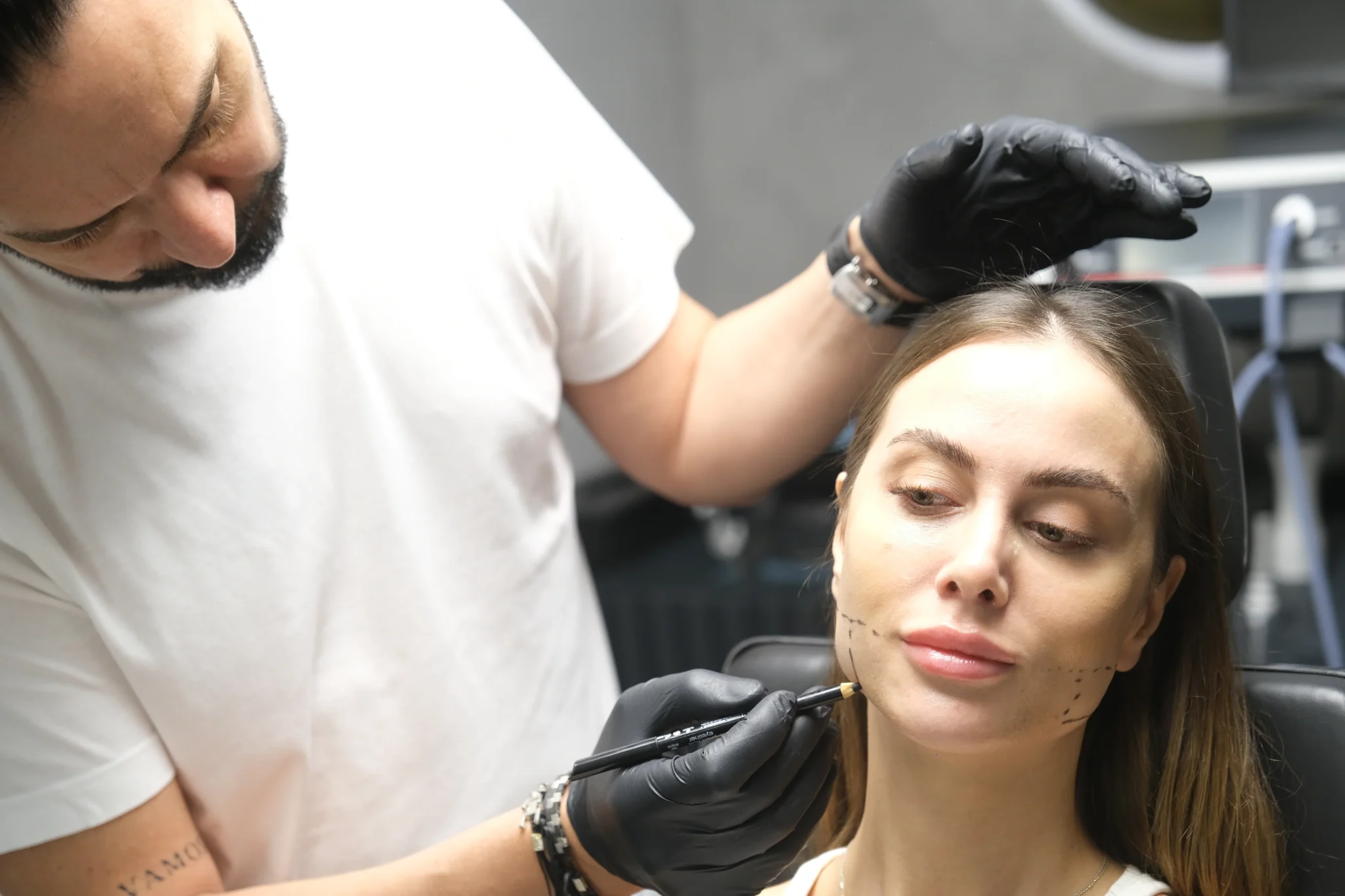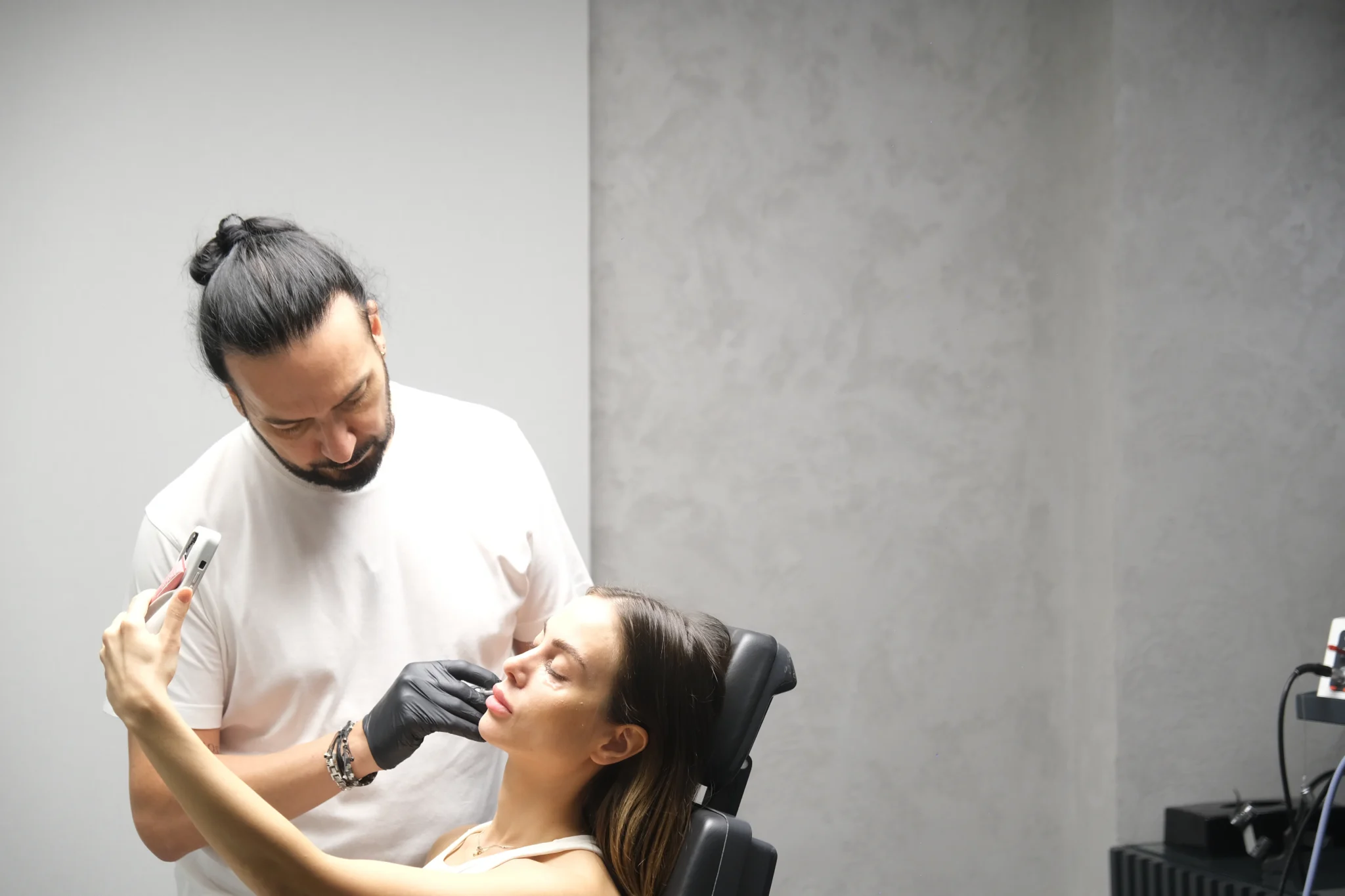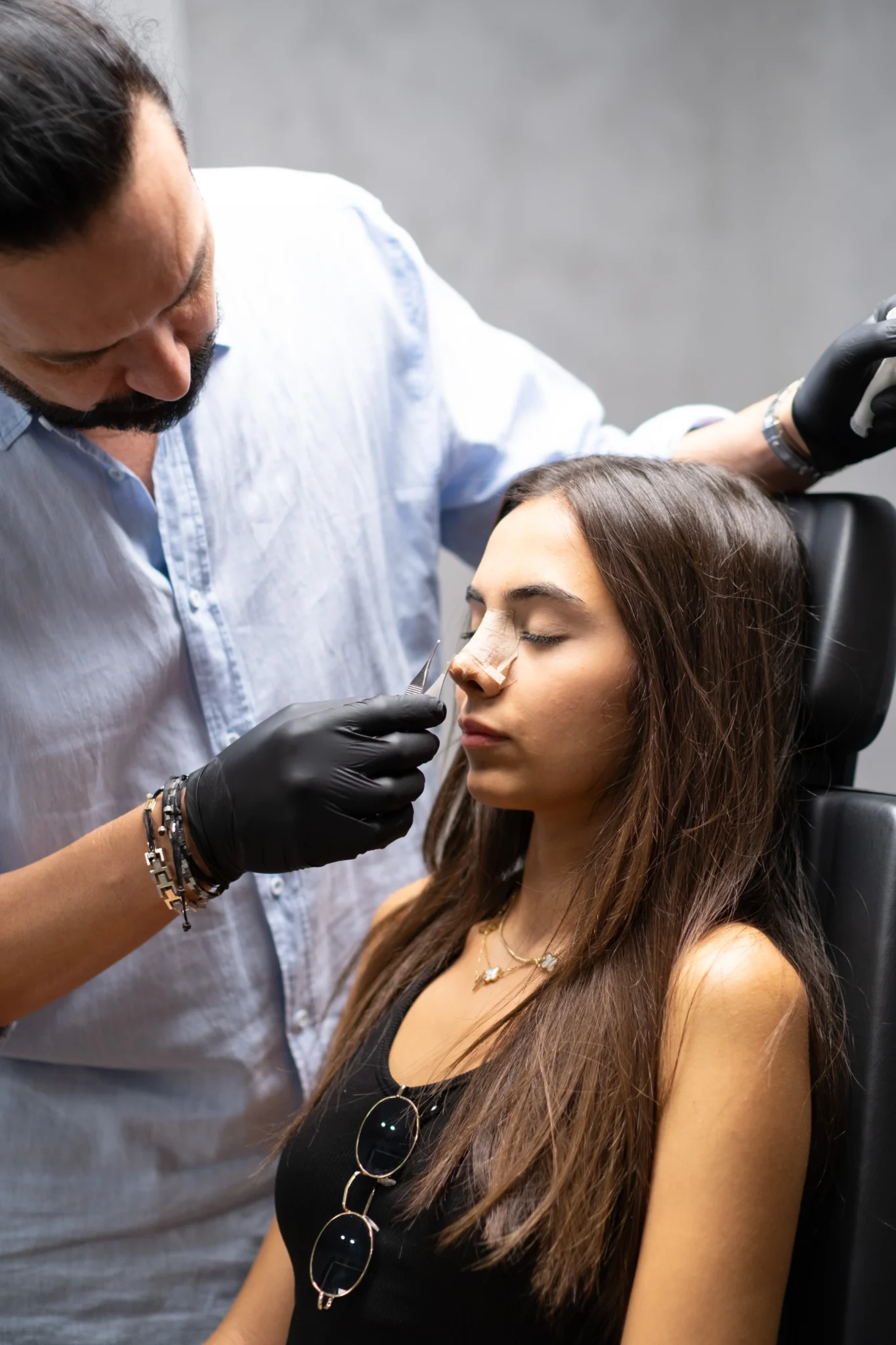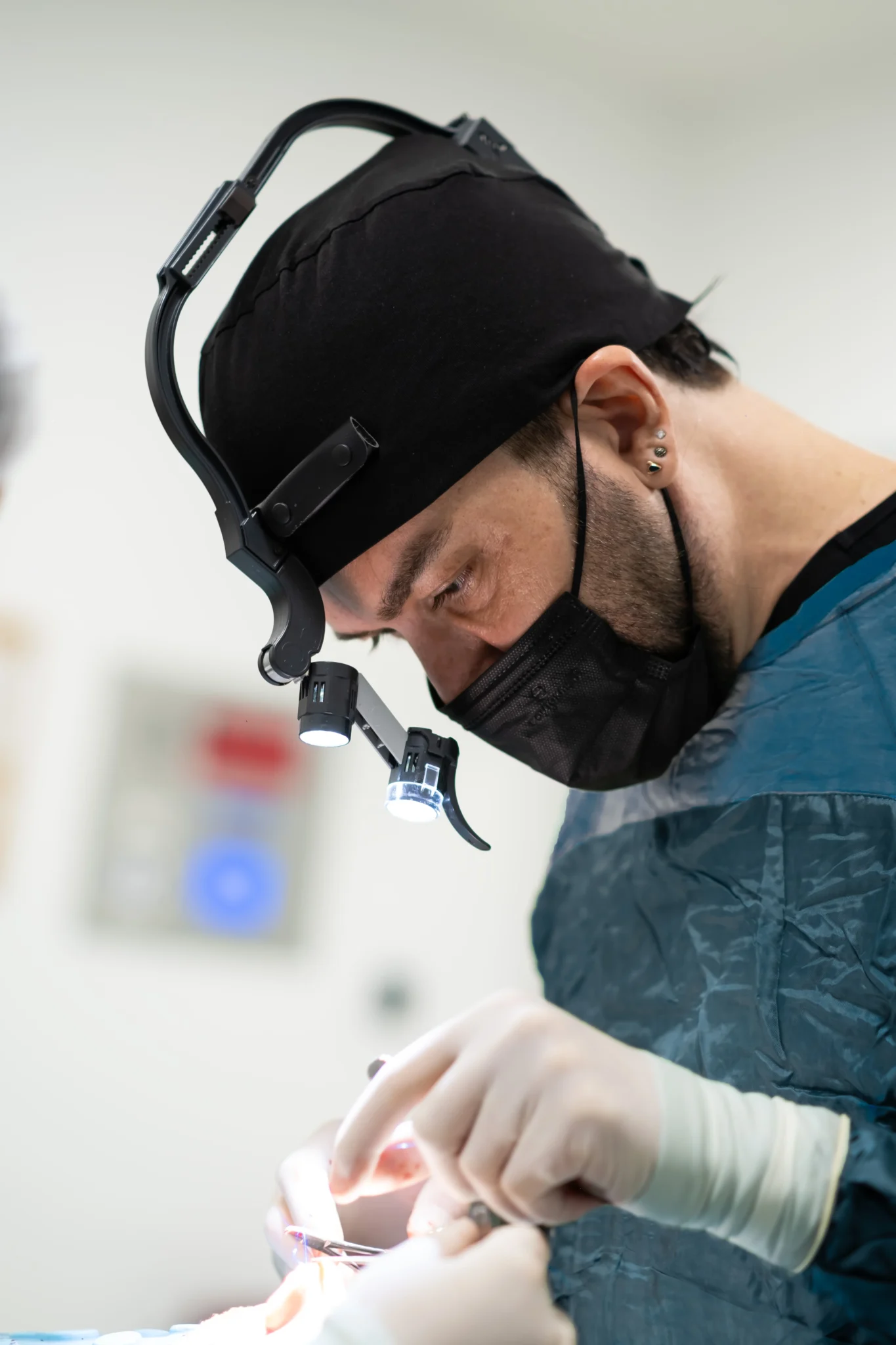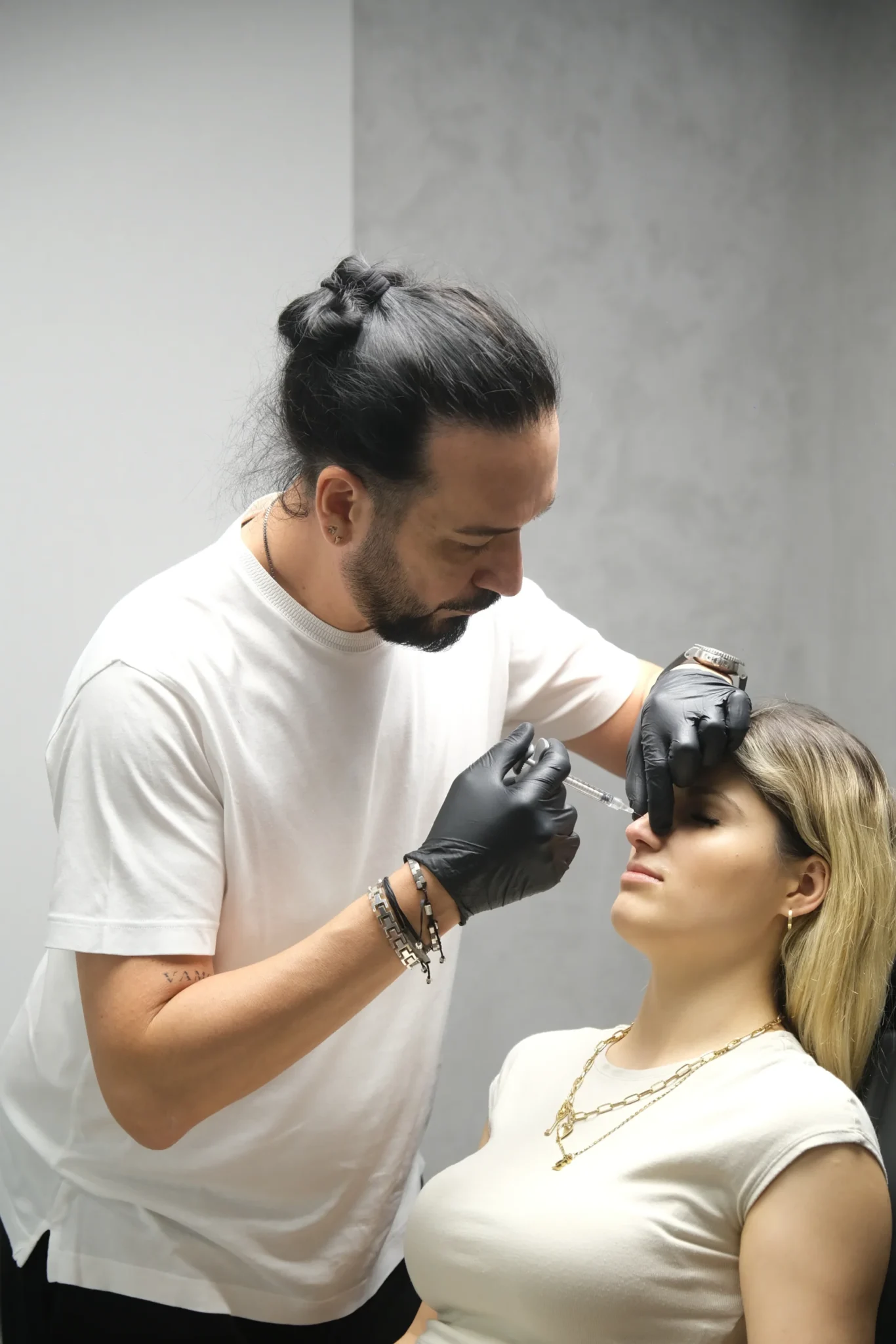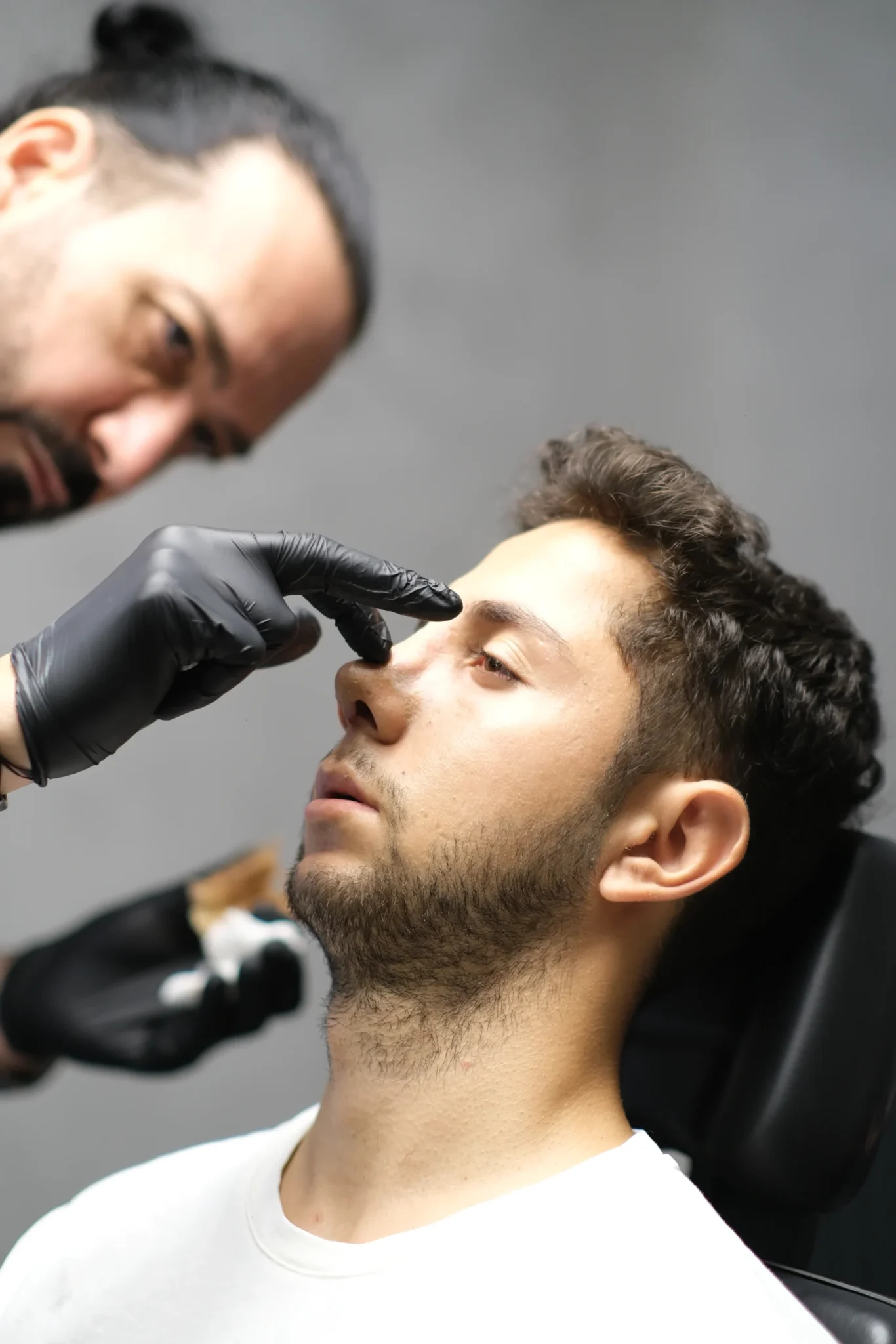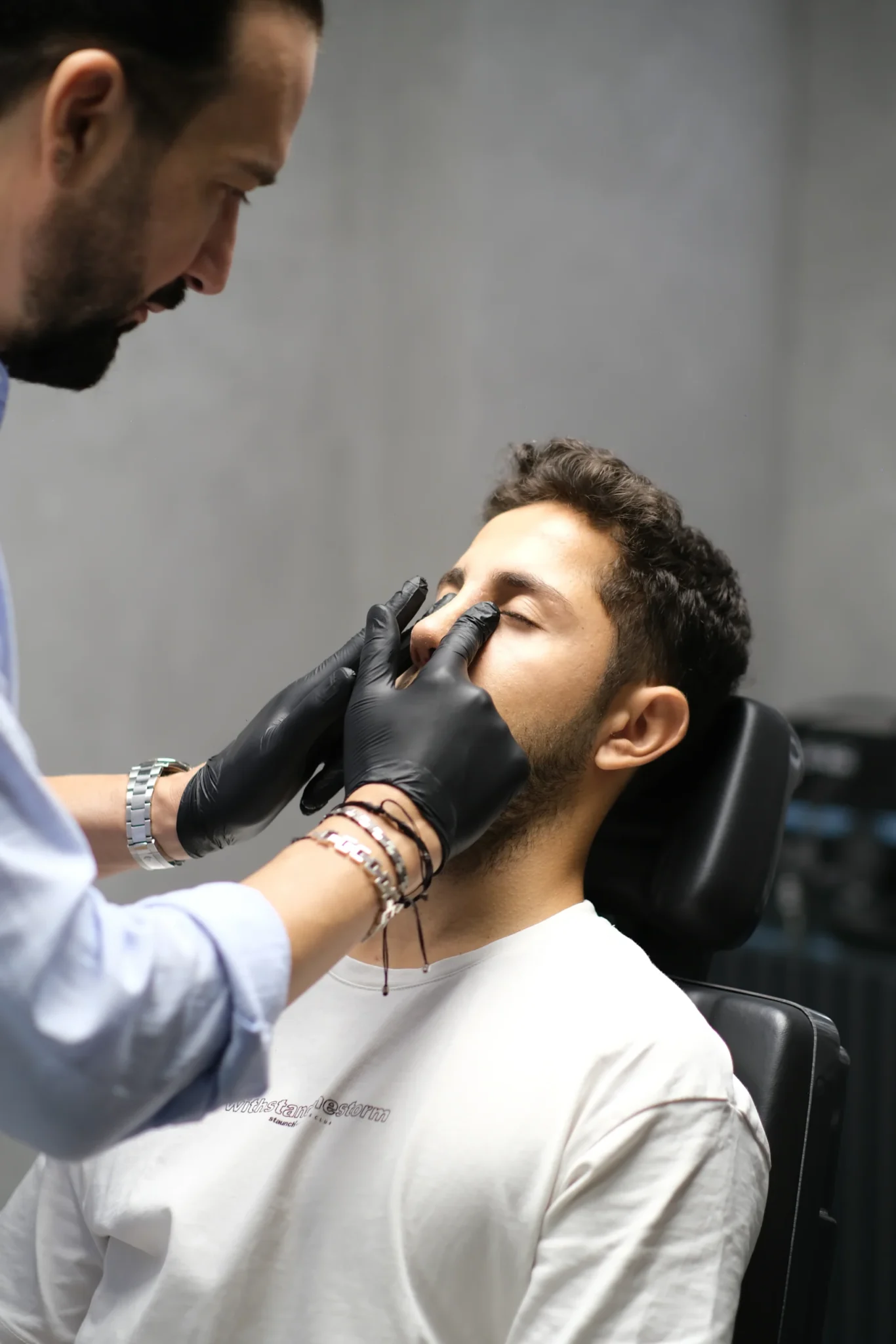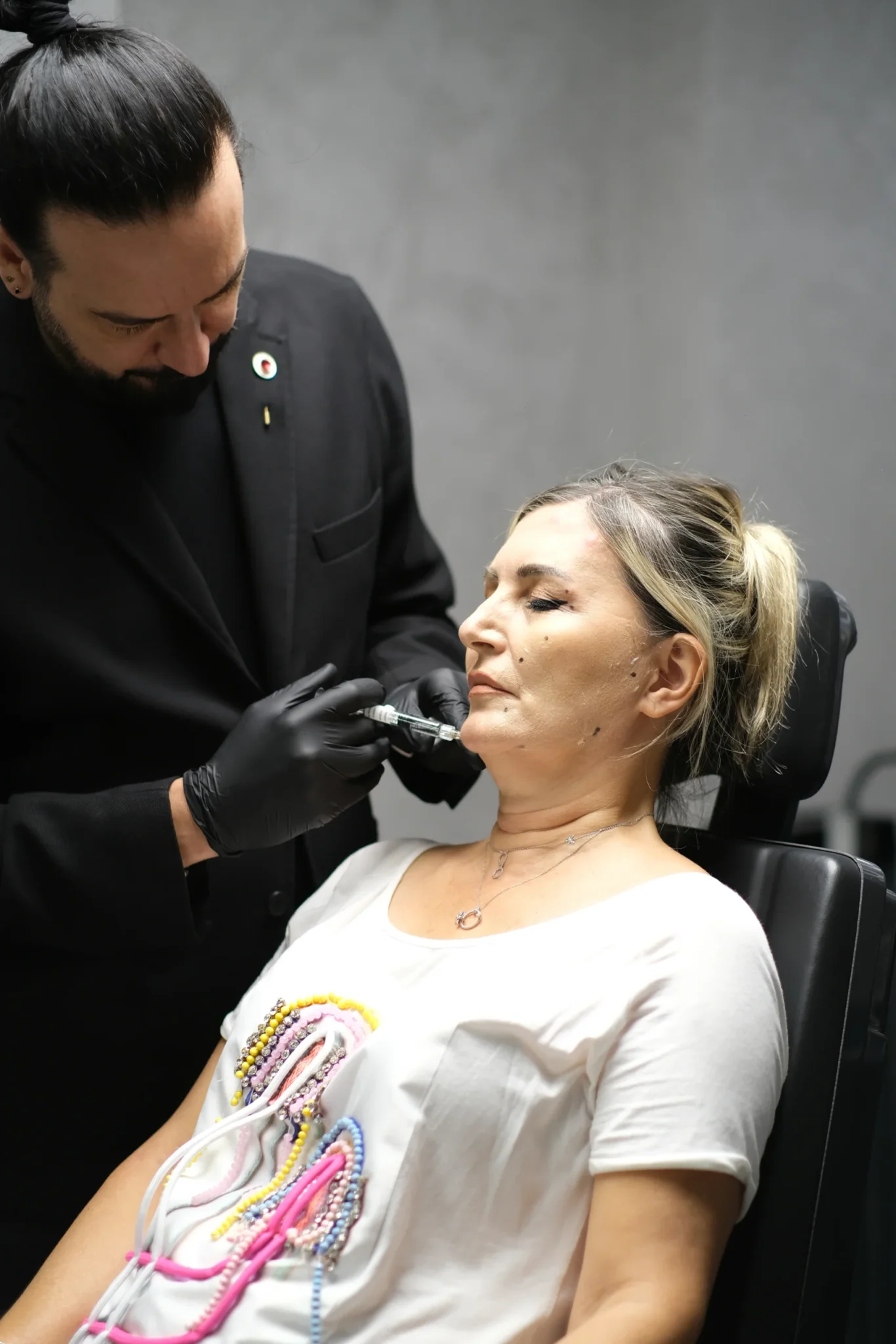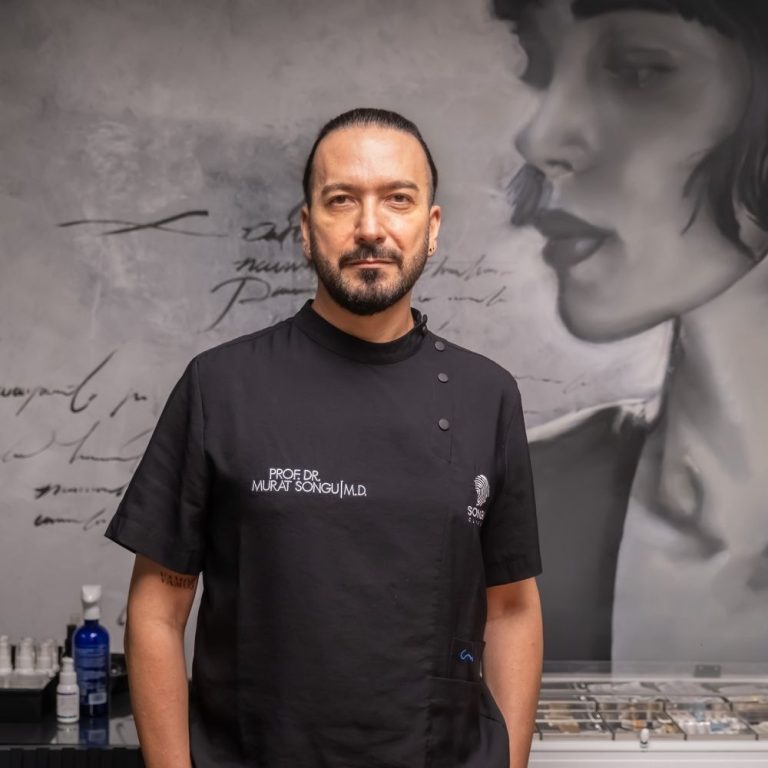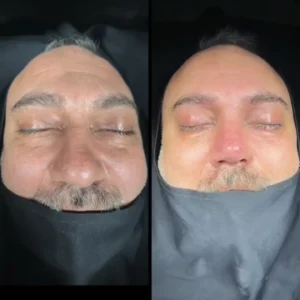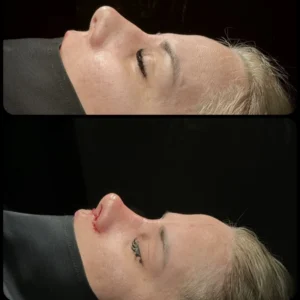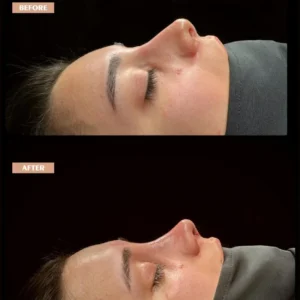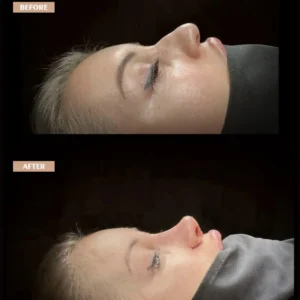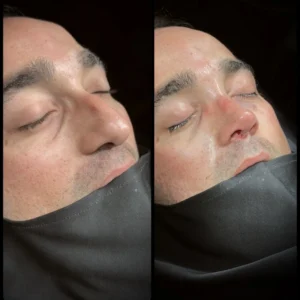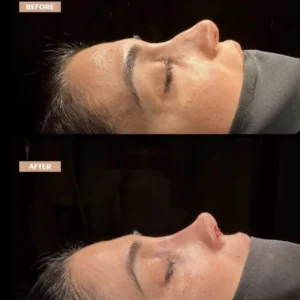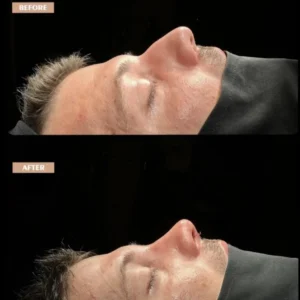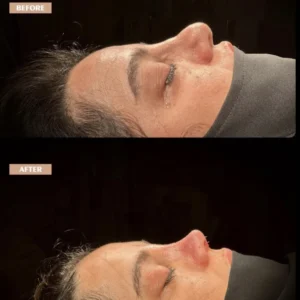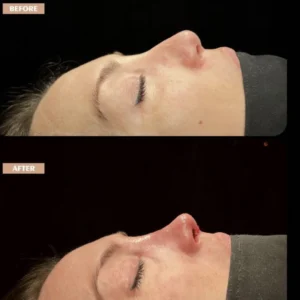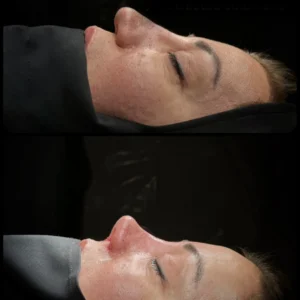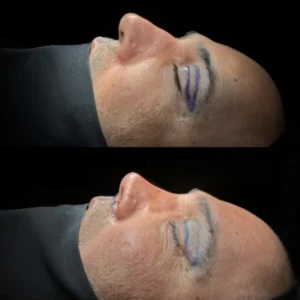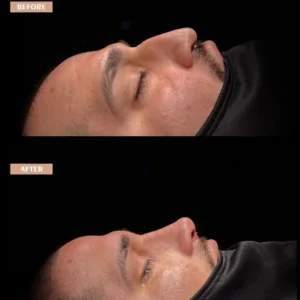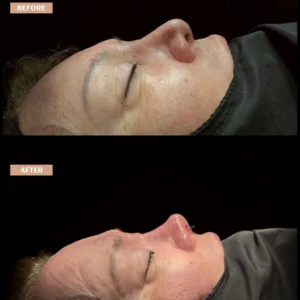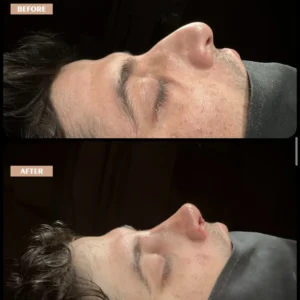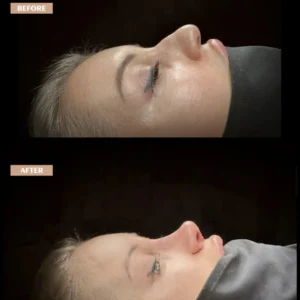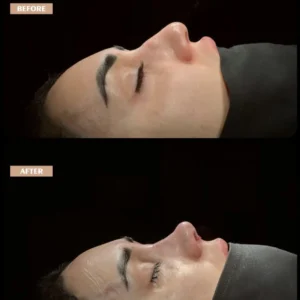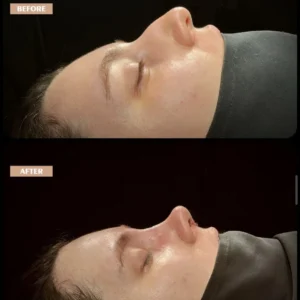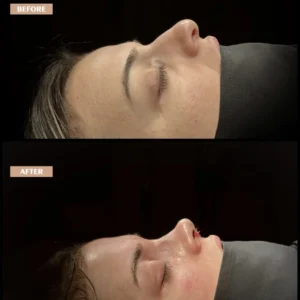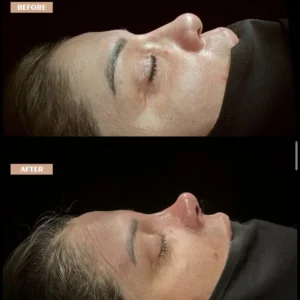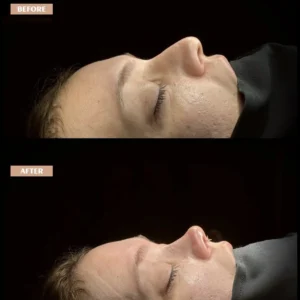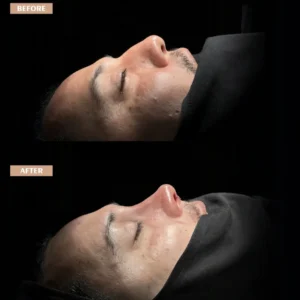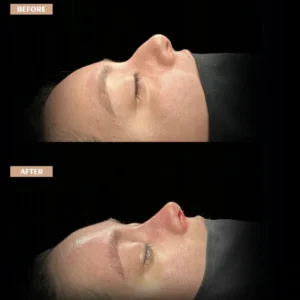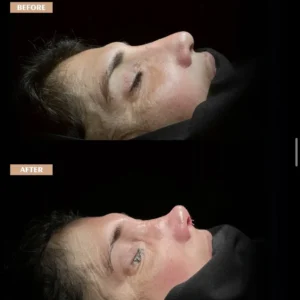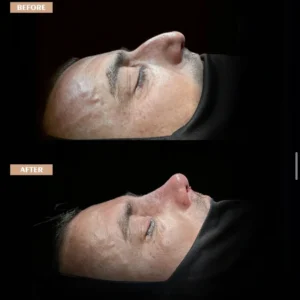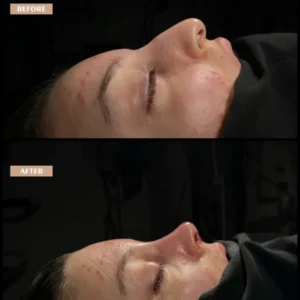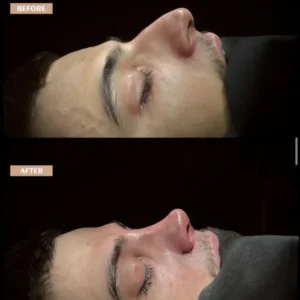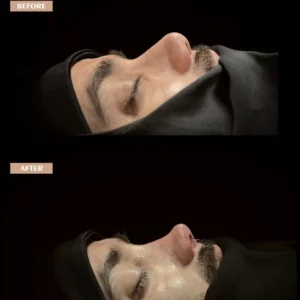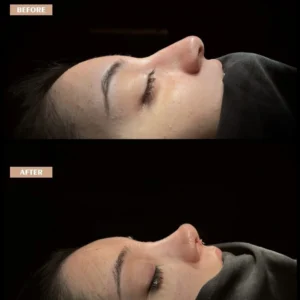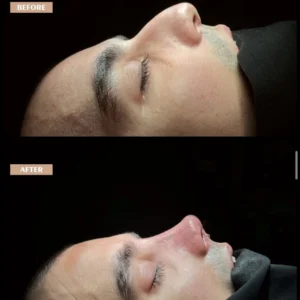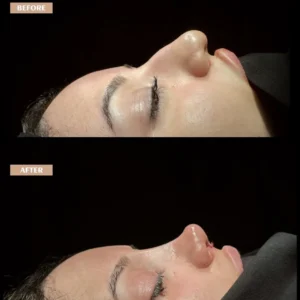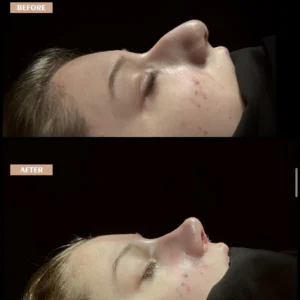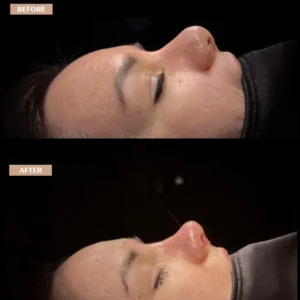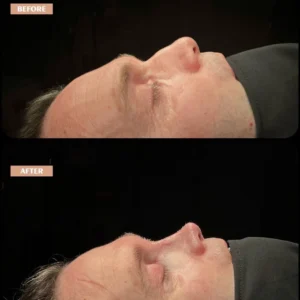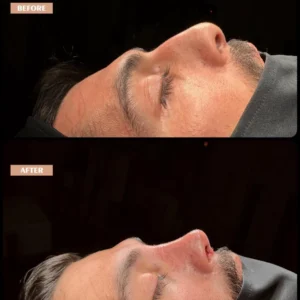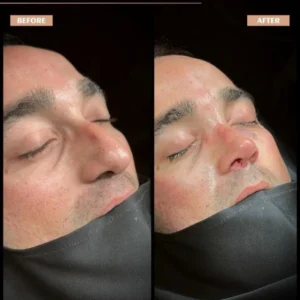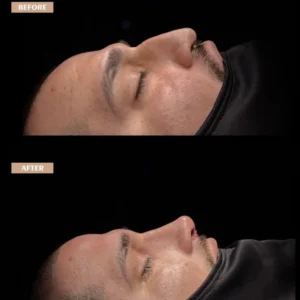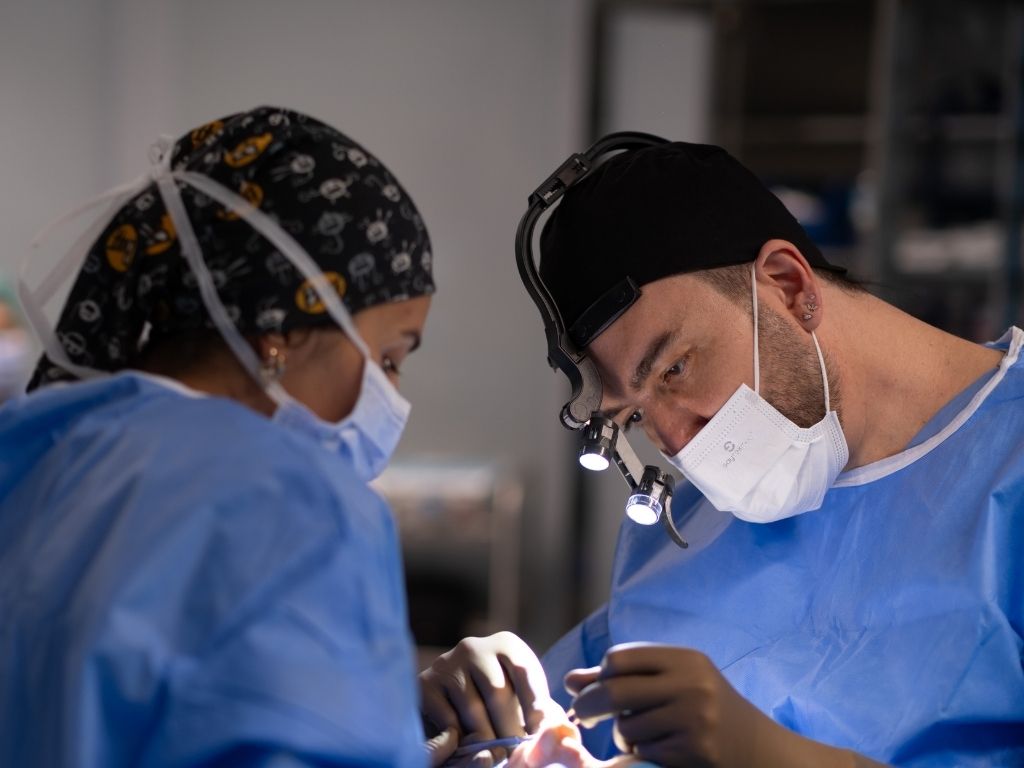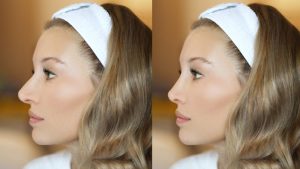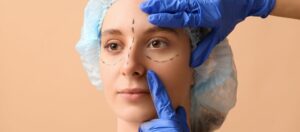
Letdown Rhinoplasty is one of the nose aesthetic surgeries, specifically applied to correct a slightly humped nasal structure. In this technique, without intervening with the nasal bridge bone and cartilage structure, the nasal bridge is moved downward by removing bone or cartilage from the side walls of the nose. This method aims to achieve an aesthetic appearance by preserving the natural structure of the nasal bridge.
Letdown rhinoplasty provides the surgeon with operational freedom while preventing potential visual distortions that may occur during the shaping of the nasal roof. In addition to offering a quick recovery process, it also improves nasal functions while maintaining naturalness.

Turkey's Rhinoplasty Doctor
Prof. Dr. Murat Songu
Revision Rhinoplasty Specialist
Born in İzmir in 1976, Prof. Dr. Murat Songu entered İzmir Atatürk High School and then, in 1994, started at Ege University Faculty of Medicine. He completed his specialty training in Ear, Nose, and Throat Diseases at Celal Bayar University. In 2005, he worked on rhinology and otologic surgery in Bordeaux, France, at St. Augustin Clinic with Dr. Guy Lacher and at Bordeaux University with Prof. Vincent Darrouzet.
İçindekiler
One of the Best Surgeons for Letdown Rhinoplasty in Turkey
Prof. Dr. Murat Songu is recognized as one of the top surgeons for letdown rhinoplasty in Turkey, specializing in this preservation-focused technique that avoids excessive tissue removal. His expertise in structural nasal anatomy allows for functional, long-lasting aesthetic improvements.
What is Letdown Rhinoplasty?
Letdown rhinoplasty is one of the nose aesthetic surgeries and is applied to correct a slightly humped nasal structure. In this method, without intervening with the nasal bridge bone and cartilage structure, the nasal bridge is moved downward by removing bone or cartilage from the side walls. The features of letdown rhinoplasty are as follows:
- Natural appearance: This method preserves the natural structure of the nasal bridge, achieving an aesthetic appearance.
- Nasal functions: Letdown rhinoplasty can also improve nasal functions and provide better breathing.
- Quick recovery process: Letdown rhinoplasty, applied with a closed technique, offers a quicker recovery process due to less tissue trauma.
- Surgical freedom: This technique provides the surgeon with more freedom during the operation and offers more control in shaping the nasal roof.
- Aesthetic results: Letdown rhinoplasty can refine the shape of the nose, straighten humped noses, and achieve a thinner and uplifted nasal tip appearance.
Letdown rhinoplasty is an effective option for individuals seeking nasal aesthetics that combines natural appearance, quick recovery, and functional improvements. However, since each individual’s condition is different, it is important to consult a specialist before surgery.
Before & After Gallery
How is Letdown Rhinoplasty Performed?
Letdown rhinoplasty is a preferred method for nose aesthetics. It is performed with the following steps:
- The patient’s overall health status and nasal structure are evaluated.
- Detailed planning is done before the surgery, considering the patient’s expectations.
- General anesthesia is administered to the patient, and the surgery begins.
- Small incisions are made inside the nostrils.
- The nasal skin is lifted to make the nasal bones and cartilage structures visible.
- Cartilage or bone is removed from the side walls at the lower part of the nasal bridge.
- The nasal bridge is moved downward to correct the humped nasal structure.
- After removing the excess bone or cartilage, the nasal bridge is reshaped to achieve a natural appearance.
- The incisions are closed, and a splint or cast is placed on the nose.
- A postoperative recovery period begins, during which the patient is monitored.
During this process, it is important for patients to follow the doctor’s recommendations to ensure a healthy recovery. Swelling, bruising, and discomfort for a certain period after surgery are normal. The recovery process may vary depending on individual differences. Following postoperative check-ups and adhering to the doctor’s guidance ensures a healthy recovery process.
Postoperative Recovery Process of Letdown Rhinoplasty
The recovery process after letdown rhinoplasty is generally quick and smooth. Here are some important points to consider after letdown rhinoplasty surgery:
- Bruising and swelling: Bruising and swelling are normal during the first few days after surgery. This condition gradually decreases and usually disappears within a week.
- Pain and discomfort: Mild pain and discomfort are normal after the surgery. It is recommended to use the painkillers prescribed by your doctor regularly.
- Splints and tapes: The splints and tapes placed on the nose after surgery are removed after a few days. It is important to follow the doctor’s recommended dressings regularly during this period.
- First week rest: It is generally recommended to rest for a week after surgery. Avoiding excessive physical activities and following your doctor’s instructions can speed up your recovery process.
- Check-ups: Your doctor will schedule follow-up appointments at certain intervals. During these check-ups, your nasal healing process will be evaluated, and necessary guidance will be provided.
The recovery process after letdown rhinoplasty can vary from person to person. The important thing is to follow your doctor’s recommendations, attend regular check-up appointments, and give yourself time to recover.
Advantages and Disadvantages of Letdown Rhinoplasty
Letdown rhinoplasty has both advantages and disadvantages.
Advantages:
- Natural appearance: Letdown rhinoplasty maintains the natural structure of the nasal bridge, achieving an aesthetic appearance.
- Functional improvement: This method also helps improve nasal functions by ensuring that the airway inside the nose does not narrow.
- Surgical freedom: It provides the surgeon with operational freedom related to shaping the nasal roof and prevents visual distortions.
- Fast recovery process: This surgery, performed with a closed technique, generally offers a quicker recovery process.
Disadvantages:
- Temporary swelling and bruising: Mild swelling and bruising may be seen after the surgery, but they usually disappear quickly.
- Attention-required factors during the recovery process: It is important to follow the dressing instructions recommended by the doctor during the recovery process.
- Not suitable for individuals with diabetes: The healing process may be more challenging for individuals with diabetes, and letdown rhinoplasty is not recommended for these individuals.
- Surgery cost: Rhinoplasty surgeries generally have costs that vary depending on the individual situation. Therefore, the cost of the surgery should be considered.
Letdown rhinoplasty is a method that can provide positive results both aesthetically and functionally. However, the advantages and disadvantages should be individually evaluated for each patient.
What Factors Influence the Cost of Letdown Rhinoplasty?
The cost of letdown rhinoplasty varies depending on several factors. Among these, the following factors play an important role:
- Surgeon’s Experience: A letdown rhinoplasty performed by an experienced and specialist surgeon may come at a higher cost.
- Choice of Clinic and Hospital: The clinic or hospital used, the quality of the facilities, and the services provided can affect the prices.
- Level of Need: Each individual’s nasal structure and aesthetic goals are different. Therefore, the degree of need and the scope of the surgery can affect the prices.
- Regional Differences: Geographic location can also impact prices. Health clinics in major cities tend to offer services at higher prices.
- Additional Costs: Postoperative follow-up appointments, medications, anesthesia costs, and other additional expenses can also influence the price of letdown rhinoplasty.
The cost of letdown rhinoplasty is determined based on the individual condition of the patient and the assessments made by the surgeon. Therefore, it is important to consult a doctor for precise pricing.
| Country | Average Letdown Rhinoplasty Cost (€) |
| United States | €16,000 – €32,000 |
| United Kingdom | €14,000 – €28,000 |
| Australia | €12,000 – €24,000 |
| Canada | €14,000 – €28,000 |
| Ireland | €13,000 – €26,000 |
| New Zealand | €11,000 – €22,000 |
| Turkey | €4,000 – €8,000 |
Latest Posts
Rhinoplasty Reviews in Turkey
Frequently Asked Questions
What Complications Can Occur After Letdown Rhinoplasty Surgery?
Some complications may arise after letdown rhinoplasty surgery. Firstly, there may be a problem with bleeding. Additionally, there is a risk of infection. Problems can occur during the wound healing process. Moreover, nasal congestion is a common issue. Patients frequently visit their doctor with complaints of pain. Temporary numbness in the nasal tip can occur as a complication. Asymmetry may also be addressed along with aesthetic dissatisfaction. These types of issues are common complications that may be observed in the postoperative period.
Can Letdown Rhinoplasty Surgery Be Repeated?
The letdown rhinoplasty procedure can be repeated in some cases. If the expected results are not achieved after the initial intervention, this method is considered. Additionally, complications that arise may necessitate a second operation. Therefore, when patient satisfaction is not fully achieved, this repeat procedure, known as revision rhinoplasty, is recommended. This allows for more satisfactory results both aesthetically and functionally. This process is shaped according to the doctor’s recommendation and the patient’s needs.
What Tests Should Be Performed Before Letdown Rhinoplasty Surgery?
Several tests need to be performed before a letdown rhinoplasty operation. First, a complete blood count (CBC) test is done to evaluate the patient’s overall health. Next, coagulation tests are performed to foresee potential bleeding risks. An EKG test is also important to check heart rhythm and functions. A chest X-ray is taken for older patients to observe the condition of the lungs. An anesthesia assessment is conducted to ensure the patient’s suitability for anesthesia. Finally, photos related to nasal aesthetics are taken to be used in operation planning.
Is There Pain After Letdown Rhinoplasty Surgery?
After letdown rhinoplasty surgery, patients generally experience mild to moderate pain. This is a natural result of the surgical intervention. Undoubtedly, thanks to modern medical methods, this pain can be effectively managed with appropriate painkillers. Therefore, patient comfort can be significantly increased during the postoperative period. Specifically, using prescription medications, pain can be controlled. Thus, the recovery process can be more comfortably endured. In conclusion, pain after letdown rhinoplasty is a manageable condition.
When Are Tampons Removed After Letdown Rhinoplasty Surgery?
Following a letdown rhinoplasty operation, patients often wonder when their tampons will be removed. Generally, tampons are removed within 3 to 4 days after the surgery. However, this period may vary depending on the doctor’s advice and the patient’s healing speed. Specifically, for patients whose healing process progresses faster than expected, the tampons may be removed earlier. On the other hand, in some cases, this period may be extended to provide extra protection. Therefore, each patient’s situation is unique, and it is best to proceed according to the doctor’s recommendations.

